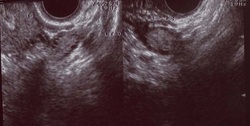
Majority of women who have ectopic pregnancy will have no risk factors. Therefore it is important that any women who is pregnant and complains of abdominal pain in early pregnancy, ectopic pregnancy needs to be excluded.
Factors that can increase the risk of ectopic pregnancy include:
- Previous pelvic infection:
Pelvic inflammatory disease affects about 11% of the female population. Unfortunately not all women who have this infection have symptoms. In the majority of women symptoms go unnoticed. And sometimes it is only after the diagnosis of ectopic pregnancy that sequelae of PID are found. About 10% of women who have had PID will go on to develop ectopic pregnancy
- Previous tubal surgery
- Current use of an intrauterine contraceptive device
For the majority of women in whom the ‘coil” fails the pregnancy will be in the womb. However ectopic pregnancy is also common. A pregnancy test needs to be done and if it is positive a pelvic ultrasound scan needs to be arranged to exclude ectopic pregnancy
- Previous sterilization
When sterilization fails it is more than likely that the pregnancy will be in the uterus, however there is a good chance that it will be in the fallopian tube. For this reason if a woman has been sterilized and misses a period and feels she may be pregnant it is important to get a pregnancy test. If this is positive she needs to make sure she doesn’t have an ectopic pregnancy by getting an ultrasound scan. This can be done in early pregnancy assessment units or via the GP
- Previous history of ectopic pregnancy
Women who have had a previous ectopic pregnancy have a 10% risk. This could be interpreted a number of ways. If they were to get pregnant 10 times one would be an ectopic.
If a woman has had 2 previous ectopic pregnancies the risk increases to 25%
- Assisted reproduction (IVF)
Other risk factors for ectopic pregnancy are
- Previous pelvic surgery
- Endometriosis








 RSS Feed
RSS Feed